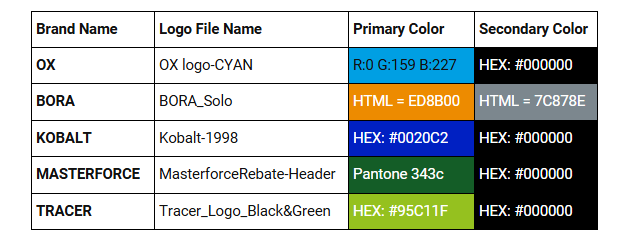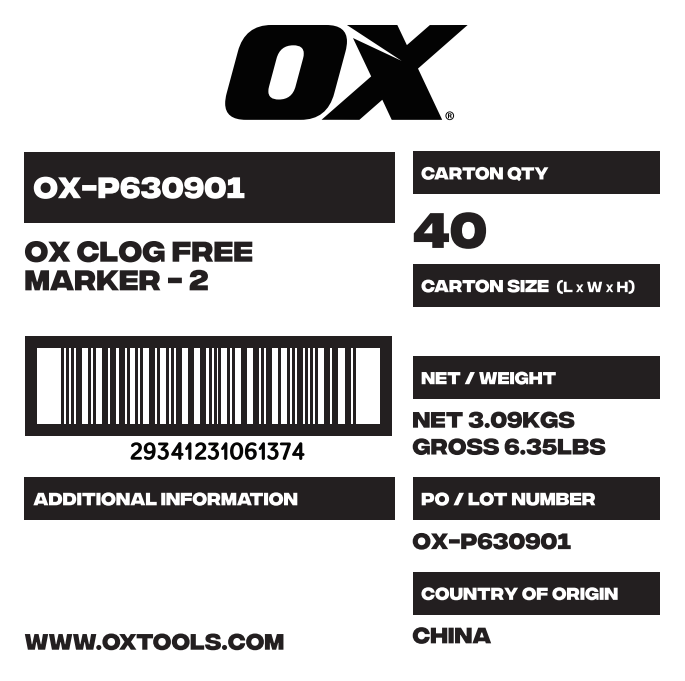Proposal Summary
The Proposal Covers the scope of the development and implementation of a Product Specification Document for Item Records in NetSuite. The document will feature a static header on all pages, include product images, package images, barcode generation, carton details, and a revision history. Users can generate the document directly from the item record by clicking a new button.
The estimated time for the completion of the Proposal is 192 hours
This proposal is based on our discussions, anticipation, and understanding through our meetings and other communications. Any requirements/updates during the development will be treated as a change request.
Requirement from OX Tools Global
The client has requested the implementation of a product specification document for item records using a specific template within NetSuite. This functionality will include template configuration, file storage and linking, download functionality, barcode label generation, and the creation of new tabs and fields for item records. These components are essential for automating business processes and streamlining operations.
Deliverables
The implementer has reviewed the requirement thoroughly and proposes the following deliverables:
Specification Document Button:
- The implementer will add a button labeled “Specification Document” to the Item record.
- This button will be available for Inventory items, Kit/Package, and Assembly/Bill of Materials.
- The button will be accessible only in the view context of the item record.
- Clicking the button will open a new tab displaying the Product Specification PDF document with complete details.
Product Specification Document Contents:
The Production Specification Document contains the followings details
- Main Product Image
- Technical Drawings
- Product CMF
- Product Artwork & Graphics
- Product Packaging
- Inner Carton Details
- Master Carton Details
- GMA Pallet Details
- Euro Pallet Details
- Revision Documentation
Each page will feature static headers with the Barnd logo, product barcode, version date, and version number.
The attached spreadsheet document outlines the detailed layout and field mapping of each page.
Field Mapping Document Link: OTGA-2535 – OX Tools Item Specification Document – Field Mapping_ V1.1
Dynamic Branding and Logo Customization:
- The PDF document’s color scheme and logo will dynamically change based on the brand associated with the item. The brand value will be determined by the “Brand” field (custitem_brand) available on the item record in NetSuite.
- The implementer will account for five specific brand types listed below. If an item’s brand does not match any of the specified types, it will default to the “OX Tools” brand settings.
- Each brand has a distinct logo, primary color, and secondary color, which should be applied to the PDF document accordingly. The logo files for each brand are included in the field mapping file provided.

Barcode Generation:
- There is a static product barcode value on all pages. The implementor will generate the barcode using the Advanced PDF template functionality and add it to the static value on all pages. The barcode type will be static. In the shared example, the barcode type is “EAN-13.” The implementer will ensure the main product barcode type is “EAN-13.”
- There are four additional barcodes included in the product specification document: Inner Carton, Master Carton, GMA Pallet, and Euro Pallet barcodes. These barcodes will use static barcode types, or the client may provide the barcode type needed for generating the barcode within the specification document. The barcode size will also be fixed, as defined in the mapping document.
- The carton barcode will be generated using a template label provided by the client. Each time a specification document is generated, the carton labels will be created or updated and stored in the File Cabinet within the folder corresponding to the item SKU. The latest version of the carton label will always be stored in the File Cabinet, replacing any previous versions. This updated label will then be used as the barcode image within the specification document. Older versions of the barcode will not be retained.
- The label will follow the layout provided in the sample attached below and in the field mapping document. The label will be in black color and will always include the OX Tools logo. All details on the label will also be available in the item record.
Sample Carton label layout

Version Numbering and Date:
- The implementor will create two custom item fields named “Version#” and “Version Date” to store the version number and date.
- Additionally, the implementor will develop a script to identify changes in the item records by examining the system notes.
- Furthermore, the implementor will create a new custom record type for revision history details. Whenever changes occur in the item record, those changes will be stored in the custom record, including the update date, updated user, version number, and updated details such as the field name using the revision description details.
- The update details will be fetched from the item record’s system notes. Only specific fields changes will be considered, not all field value changes. The list of fields to be monitored will be provided by the client during the development phase.
Fields and Tab Configuration:
- At the end of each page, a file URL will be displayed. To manage multiple versions of these file URLs, the implementer will create a sublist using a custom record in table format under the item record. This sublist will store various versions of the file URLs, along with their version numbers and corresponding revision notes. The most recent version of the file URL will be used when generating the specification document, and any revision notes can be included in the document’s revision history.
- This sublist table format will be added to eight pages, excluding the first and last pages.
- To support this functionality, approximately 65 fields and 10 custom records will be created as specified in the Field Mapping Document. The configuration of fields, sublists, custom record types, and subtabs will follow the guidelines provided in the document.
Notes
- The product specification document file will be read-only, preventing users from inputting values directly into the PDF document.
- The product specification document will be implemented only for inventory items, kit/package items, and assembly item types.
- The implementer will assume the field configuration will be individual for kit/package and assembly items and will not be fetched from the component items.
- The implementer assumes there is no need for page numbers in the document as per the layout.
- The layout of the document will remain the same as the shared sample layout. Changing the layout is not considered in the current phase.
- The Product Specification Document will contain 10 static pages, with the last page repeated based on the revision history details.
- The barcodes generated for the product specification document will be of a static barcode type.
- The implementer will assume that all images to be included in the product specification document will be available as NetSuite File Cabinet file URLs or file IDs on the item record. These images will not have a preview on the Item record page, preventing any additional loading delays for the page.
- To address any potential record loading time issues, there is a standard option available in NetSuite. You can navigate to Home → Set Preferences → General subtab and check the “Delay Loading of Sublists” option. Enabling this option can help reduce some of the record loading time.
- If a user adds any files to the Document field on the item record, the file will not be automatically stored in the corresponding item folder. The user must manually select the folder when adding the file via custom fields. The Document field will also display existing files, and the implementer cannot filter this list using NetSuite’s standard functionality.
- When a file is uploaded through the document field, it is stored in the NetSuite File Cabinet and is not accessible without a NetSuite login by default. Users can make this file public either manually or by adding a script.
- The image file to be added to the product specification document should be less than 10MB in size.
- The Advanced PDF template will only support JPEG and PNG image files. All images in the specification document template must be in JPEG or PNG format.
- Users can store any file type other than NetSuite-supported types (e.g., PSD, AI, SolidWorks files) as “Other binary file type”. However, users can still store these files and share a link with others to download them.
- To share the file link with individuals who do not have NetSuite access, the “Available without Login” option must be checked on the file record.
- The folder structure needs to be created manually by the client. The implementer cannot create folders for all items during the document creation process because the folders must already exist before generating the document and updating the document field values on the item record. Therefore, it is up to the client to create the main folder, subfolders for each item, and any necessary subfolders within them.
- The implementer will assume the folder structure is as follows: There is a main folder named “Specification Documents.” Within this main folder, there is a subfolder for each item, and each subfolder is named after the item’s SKU value. Inside each item folder, there are additional subfolders for storing files related to packaging, inner carton, master carton, etc. These subfolders name will start with the item SKU value, followed by additional descriptive names.
- The proposal is based on the layout and field mapping available in the Field Mapping Spreadsheet document. The document link is attached to this proposal, and the implementer will also send the document via email.
- The Product Specification document includes barcodes, images, and multiple pages. These enhancements may cause some performance delays when generating the PDF document. The implementer will render the PDF document in an optimized way to minimize loading delays.
- In the current scope, only the creation of the product specification document is considered. Automating approvals (e-signatures) through DocuSign or any other external system is not considered. This customization would require an in-depth analysis of the external system’s API availability. Therefore, the implementer will consider automating the e-signing process in the next phase.